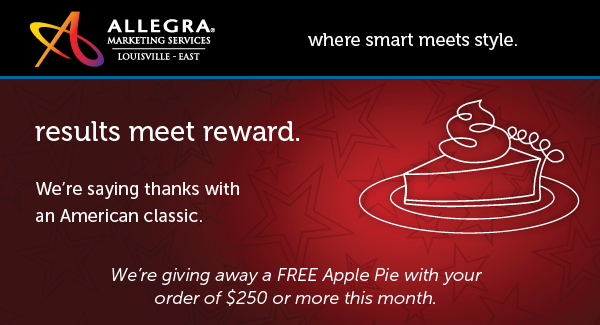 Most of us are making a conscious effort to practice environmental responsibility. At home, plastic recycling bins are a common sight in communities large and small. In the workplace, some businesses do a little better than others with eco-friendly practices including recycling, waste reduction and reducing energy consumption.
Most of us are making a conscious effort to practice environmental responsibility. At home, plastic recycling bins are a common sight in communities large and small. In the workplace, some businesses do a little better than others with eco-friendly practices including recycling, waste reduction and reducing energy consumption.
Just how much waste can one small business generate? Paper alone accounts for about 70 percent of office waste – and on average – the typical office worker uses 10,000 sheets of paper a year. This does not include the variety of printed promotional and sales items a business might generate.
What happened to the vision of a “paperless” office? While technology has moved many files onto a variety of hard drives and flash drives, what’s in those files often ends up as printed brochures, reports, presentations, memos and mailers.
Look around your office. There are a number of ways that any small business can start going green with minimal effort. Not only will your business be kinder to the environment, it can make an impact with customers as well. Studies show that more people are seeking out socially conscious products and suppliers. What can your business do to go green?
Push good paper.
If you have to push paper, push the good stuff. Check paper content to see what it’s made of and how it was produced. Use paper wisely to get the most from each sheet.
- Buy from a company that uses raw materials from scientifically managed forests.
- Use post-consumer recycled papers with fibers from reclaimed papers. The use of virgin and old growth forests is destroying habitats and communities around the world.
- Buy paper that is “bright enough” and doesn’t use chorine or other chemicals to add brightness.
- Use lower paper weight which uses less fiber.
- Print or copy on both sides of each sheet.
- Carefully consider the size of a document, and use half sheets when possible.
Think before you ink.
Plan printing jobs carefully. Before you print your direct mail piece or new product flyer, consult with your printer to find economical, efficient and green ways to produce effective marketing materials.
- Communicate early on with your printer and stress the importance of using environmentally preferred options.
- Request recycled paper with a high level of post-consumer content and use soy- or vegetable-based inks. Avoid inks containing heavy metals and ask about ways to reduce ink coverage in your design.
- Avoid chemical coatings and lamination to add sheen or gloss. A water-based (aqueous) lacquer coating is often the best choice.
- For projects that require binding, ask for water-based, non-chlorinated glues that can be recycled.
Choose friends wisely.
If you are marketing to cultivate business, choose your targets wisely. Not only will you be doing your part to reduce “junk mail,” but you will save your company money by not mailing to unlikely targets.
- Keep mailing lists updated and delete duplicates.
- Be selective and target specific audiences instead of sending out “shotgun” mailings.
- Track and measure responses to trim lists even more.
Visit Cyberspace.
Of the 70 percent of office waste that is paper, nearly one-third is computer printouts. Instead of producing hard copies that most likely will end up in the trash, rely more on your technology.
- Use e-mail and voice mail to communicate with colleagues.
- Proofread documents on your computer before printing.
- Save documents electronically instead of in hard copy.
Recycle and reuse.
In purchasing supplies for your company, consider recycled and reusable supplies when possible. This will not only help the environment, but can save your company money in the long run.
- Use ceramic instead of paper coffee cups.
- Consider purchasing refurbished office equipment.
- Use rechargeable batteries.
- Buy remanufactured fax, ink jet and toner cartridges and return them to the suppliers for recycling.
- For items you use a lot of, buy in bulk; for items you use little of, buy only what you need.
- Reuse shipping containers and packing materials.
- Print on both sides of the paper when you can.
- Re-use the back sides of paper for scratch pads.
Finally, let your customers know what you are doing. As more shoppers look for green, this could be an added selling point for your company.






